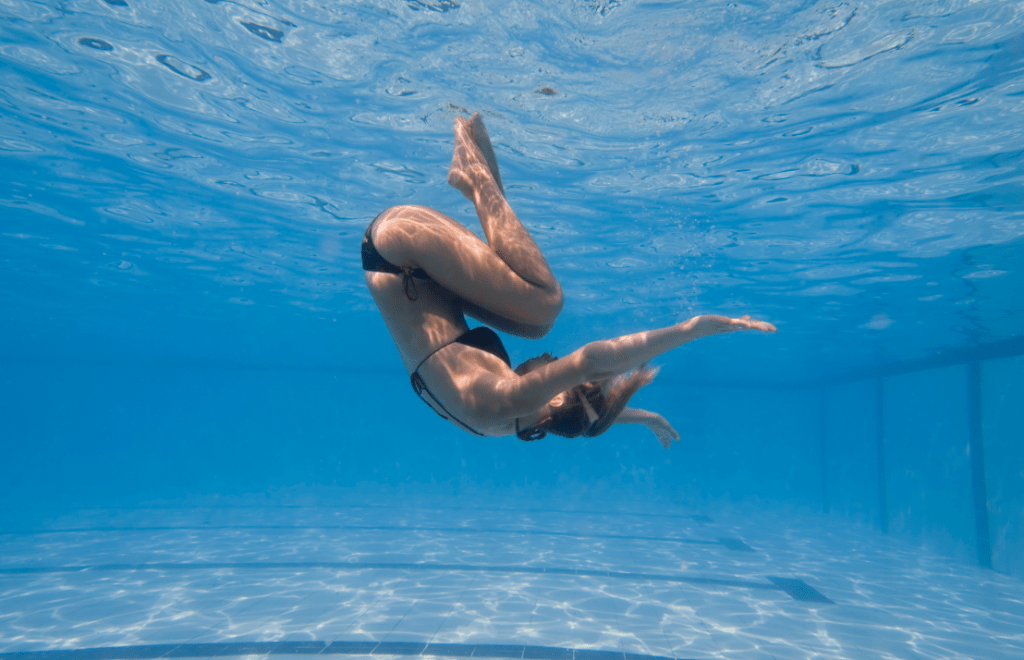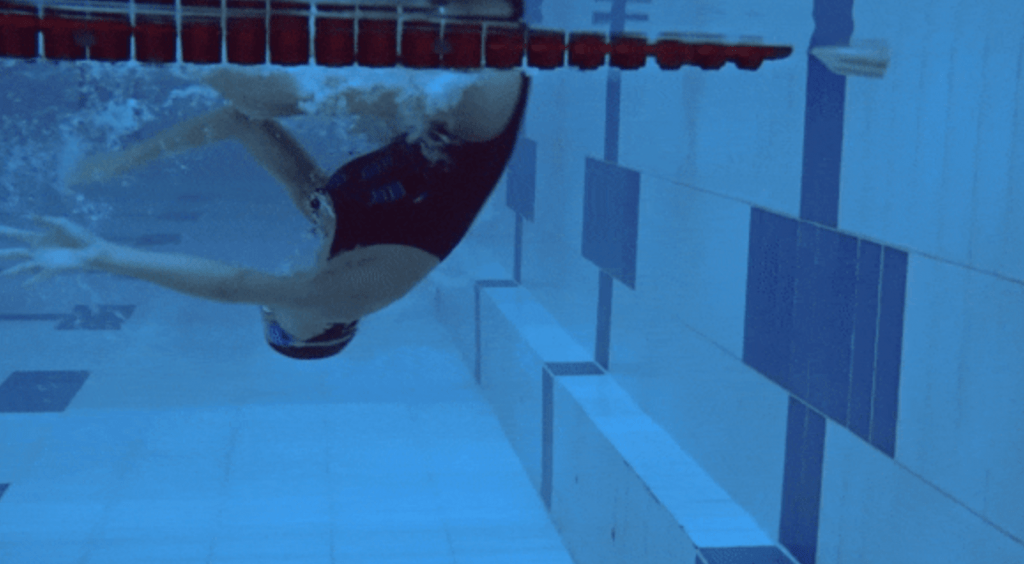Flipping, the underwater turn you execute when reaching the pool’s end, is the secret weapon for swimmers looking to conquer rapid laps. When executed correctly, this move can save valuable seconds at the beginning of each lap and provide a speed boost as you push off the wall. To harness its full potential, it’s crucial to learn the art of flipping.
Here’s the perfect form guide for flips in freestyle and backstroke:
Choosing the Right Strokes for Flipping
According to private swim coach Lindsay Bechtold, flipping is most applicable to freestyle and backstroke. She adds, “Butterfly and breaststroke turns are considered ‘open turns.'”
In butterfly and breaststroke competitions, you need to touch the wall with both hands before starting the next lap. In freestyle and backstroke, you only need to touch with one hand and then push off the wall.

Flipping: Step-by-Step Guide
- As you approach the pool’s end, the black line at the pool’s bottom forms a “T,” indicating the wall is only two feet away. This is your cue to initiate the flip.
- Allow your face to cross the “T,” performing a final stroke as you enter the wall. Complete the stroke by sweeping your arms to the sides, bringing your chin and knees to your chest.
- Keep your legs together and curled into a ball as your face turns downward. Exhale through your mouth during the flip to avoid water entering your nose.
- Your legs will eventually rise above the water surface, but keep your knees bent and legs together.
- Upon completing the flip, plant both feet flat on the wall with bent knees. Extend your arms forward out of the water, entering a streamlined position, rotate your body, and face your stomach toward the pool bottom.
Backstroke Flip: Step-by-Step Guide
- As you approach the wall, look for the flag hanging at the pool’s end. Once you reach the flag, start counting your strokes. “Every swimmer has their own ‘count’ or the number of strokes needed to reach the wall,” says Bechtold. Start the flip on the stroke just before your designated count.
- Perform a final stroke as you approach the wall. As you finish the stroke, cross the hand opposite your body over to the other side and plunge into the water, flipping onto your stomach.
- Sweep your arms to the sides, bringing your chin and knees to your chest. Maintain leg closeness and curl into a ball, letting your head lead the motion. Exhale through your mouth during the flip to prevent water from entering your nose.
- Your legs will eventually rise above the water surface, but keep your knees bent and legs together.
- Upon completing the flip, plant both feet flat on the wall with bent knees. Extend your arms overhead, pushing against the wall to enter a streamlined position.

Tips for Flipping
- Familiarize yourself with your breathing pattern before attempting flips. This helps you time the flip at the wall and prevents water from entering your nose.
- Remember to exhale through your mouth while tucking your chin to create bubbles during the flip, avoiding water intake.
- If the thought of flipping underwater in front of a wall makes you nervous, practice in open water. Bechtold often recommends beginners practice flipping every seven strokes but find a rhythm that suits you. Once confident in open water, attempt wall flips.
Mastering the art of flipping enhances your swimming experience, making each lap more efficient and enjoyable. Dive into these techniques, and soon you’ll be flipping like a pro in both freestyle and backstroke.
Flipping through the water with precision is the hallmark of a seasoned swimmer, and mastering the art of flipping in freestyle and backstroke opens the door to a world of enhanced speed and efficiency. As you embrace the techniques outlined above, remember that consistency is key. Regular practice, both in controlled pool environments and the freedom of open water, will refine your skills and build the confidence needed to execute flawless flips every time.

In the realm of competitive swimming, the ability to execute turns seamlessly can be a game-changer. It’s not just about reaching the wall; it’s about doing so with finesse, conserving energy, and propelling yourself into the next lap effortlessly. Embrace the rhythm of your strokes, the precision of your flips, and the grace of streamlined movements.
Beyond the stopwatch and lap counts, the art of flipping adds a touch of fluidity and artistry to your swim. It transforms routine laps into a dance with the water, where each stroke and turn harmonize to create a symphony of movement. So, dive in, perfect your flips, and let the pool become your canvas for aquatic elegance.



+ There are no comments
Add yours